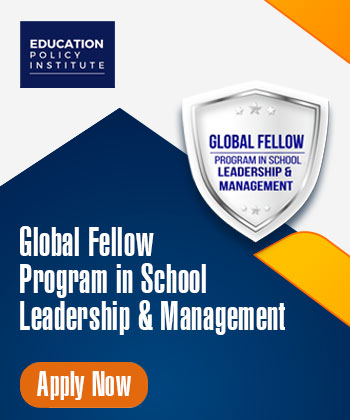Top Strategies for Empowering Young Minds to Realize Their Potentials
December 15, 2020Children need to be prepared to work in jobs and use technologies that don’t yet exist. Young people between the ages of 0-14 make up over a quarter of the world’s population, and this group is only growing. Nothing binds parents, guardians, teachers, education leaders, and children together as their shared belief in education. It is viewed as a conduit to realize one’s potential, innate self, and natural fitness, and change one’s course of life and socio-economic status – and that of family’s – for the better.
However, in a world undergoing rapid transformation and technological change, it decrees imparting timeless learning and skills to children for a fulfilling future. Education needs to change with time and stay relevant.
Getting children to schools and raising enrolments is one part of the puzzle. These projections point toward the other – the learning and skilling crisis facing our young generations. It encompasses two major challenges – the quality and credibility of what they are taught. Quality covers the effectiveness of instruction and delivery, and credibility refers to the future relevance of education.
Excel in Education through Quality and Credibility
Quality focuses on the short-term immediate changes, which can improve current offerings of an institution. Credibility focuses on the long-term planning that can help institutions make their offerings relevant to the changing times.
No one can say for certain what the future will look like. But, by rebooting their strategy, educators can ensure children learn to reinvent themselves and are prepared to face whatever the future holds. Here are seven factors, which can better the quality and credibility of educational institutions.
-
Participant-Driven System
Traditional classrooms are inadequate not only in their method of instruction and delivery but also in learning outcomes. Among some dramatic consequences of this archaic system are overcrowded classrooms and a lack of critical thinking among students.
Overcrowded classrooms limit teachers’ capacity to teach and give personalized attention to every student, which in turn leads to uninterested students and high dropout rates.
National Center for Education Statistics reported that about 14 percent of schools in the US exceed their normal capacity. For instance, approximately one in every five Chicago Public Schools begins schooling elementary students in overcrowded classrooms.
-
Experiential and Blended Learning
Chalk-and-board method of teaching is not the most effective instruction modality for this tech-friendly, internet generation. It can be intimidating for many and is less engaging. A blended pedagogy with the right mix of online, offline, and immersive mediums can dramatically improve retention and learning outcomes.
Information can be imparted in many forms today – text, graphics, music, audio, visual, games, learning camps, and even immersive (through AR and VR). For example, learning about marine biology by seeing marine life in reality; teaching history by offline/online visits to real battlefields, taking tours of castles, developing socio-political competence by doing classroom projects, undertaking hands-on campaign works, and conducting group exercises in schools and at home.
-
Parent Participation
A highly overlooked, but very important factor in shaping students’ future is their parents’ engagement in their learning. From setting expectations and encouraging them to study to providing the right peer group within and outside the school, parents remain critical to a child’s development.
American Academy of Paediatrics reports that parents’ long-term goals for their kids directly impacted their math and reading scores. However, given the busy schedules of parents and sometimes their inadequacy in handling new age subjects and the generational gap, this aspect remains a missing piece or insufficient in children’s education.
Educators can counsel parents on this and play an active role in enlisting guardians’ support in a child’s education. They can be included in the school’s activities through videoconferencing, continuous email conversations and updates, arranging downtime, and more.
-
Rewarding System
Education and reward systems have a long-standing history. It is used for behavior modification in teachers as well as students, promotes better performance, and is associated with positive reinforcement.
Educational leaders must ensure that rewards are not only used for stimulating desirable behavior but are also conveyed in the right manner to students. For instance, labeling a good performer as gifted may exclude other students and lead them into believing that this level cannot be achieved by them as they are not as gifted naturally. Recognizing high performance requires better tags and inclusive ways of appreciation. Sourcing feedback from young people can help teachers and leaders understand the efficacy of their reward systems.
For teachers, pay-for-performance strategies can make traditional salary models more dynamic and healthier engagement from them. This also includes sensitivity training for efficient handling of student rewards such that it not only keeps the high performers going but also motivates the other lot.
-
Participant-Driven System
It’s not hard to imagine schools teaching English Grammar, Physics, Mathematics, Chemistry, History, and several such courses. With some variation, institutions across the globe have a similar list of subjects. However, what’s missing is the due importance of social, emotional, and life skills. Many reports confirm the rising importance of soft skills for the future.
The four Cs – Critical Thinking, Communication, Collaboration, and Creativity – will be central to students’ growth. Schools need to focus on imparting the ability to make an informed decision amid contrasting viewpoints, developing the knack to navigate through many roles played by a human – personal, professional, societal, and duty toward the nation, fostering the capacity to manage emotions, and improving human-human understanding.
Low-pressure games, sensitivity exercises, monthly budget management, retirement planning, and other such activities must form a part of the school curriculum to teach our young minds the implications of their life choices and reactions.
-
Business-Education Collaboration
It’s time that schools, governments, and businesses take the driving seat in ensuring the quality and credibility of education. Multi-stakeholder partnerships are pertinent to better align labor market demands with education and training.
The collaboration will reduce the protracted gap between school and work and improve the accountability of educational institutions.
- Governments can work with schools and businesses to protect students’ rights.
- Corporate leaders can help educators identify the gaps in teaching and help in designing and developing the right curriculum and pedagogy.
- Educators can get a better understanding of the future by asking the right questions and regularly interacting with corporates.
-
New Disciplines
In a not too distant future, new technologies will take over our work in several ways. From AI watching our every move to data science evaluating every data point. According to the WEF, the relationship between new technologies and young people will be crucial to negotiating the well-being of larger populace.
Introducing new staples such as data science and AI in schools will provide students an initial toolbox, they need to build additional skills. Carefully curating it into the curriculum is tricky as technologies keep changing. Achieving the balance between technology and human skills will be paramount.
Parting Notes
Giving young minds the ability to influence their own fates is the best indicator of a healthy education system. And perhaps, our best bet to hedge the uncertain future in children’s favor. Education system must take actionable steps to create scopes for their personal growth and prosperity. It’s what our young demand.
Latest
Trends blogs
- The Next Wave: Emerging Trends in E-Learning by 2025
- The Role of Gamification in Education and Learning
- Artificial Intelligence: The Influence on Academic Frontiers
- Cybersecurity In Education: Building Resilient Institutions
Focus blogs
- Hybrid Learning Essentials: Preparing Students for the Future of Education
- Enhancing Learning Outcomes: Strategies for Achieving Academic Excellence in Students
- Building a STEM-Driven Future: Strategies to Enhance Educational Engagement
- The Need for Competency-Based Learning in Higher Education Institutions




